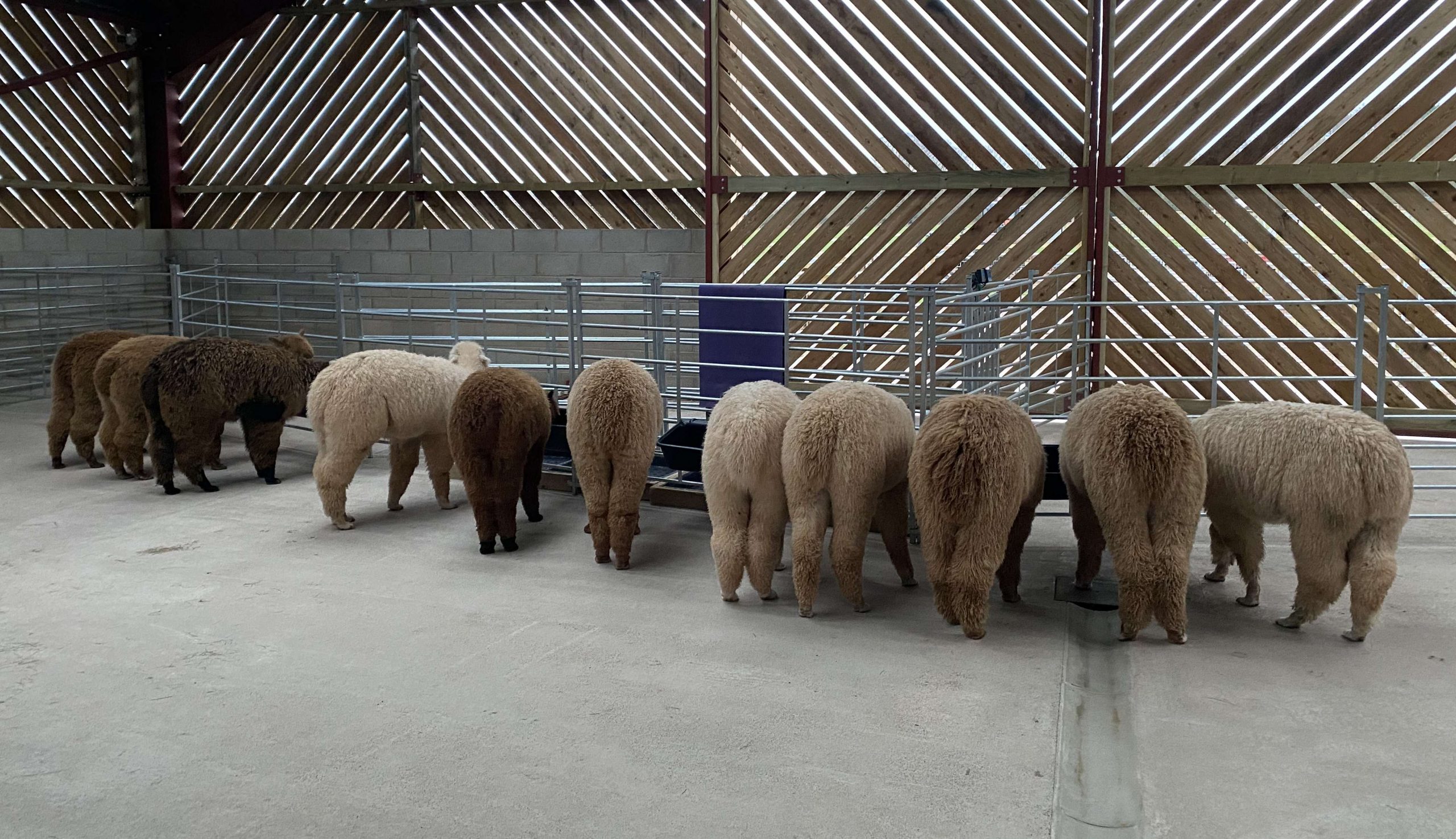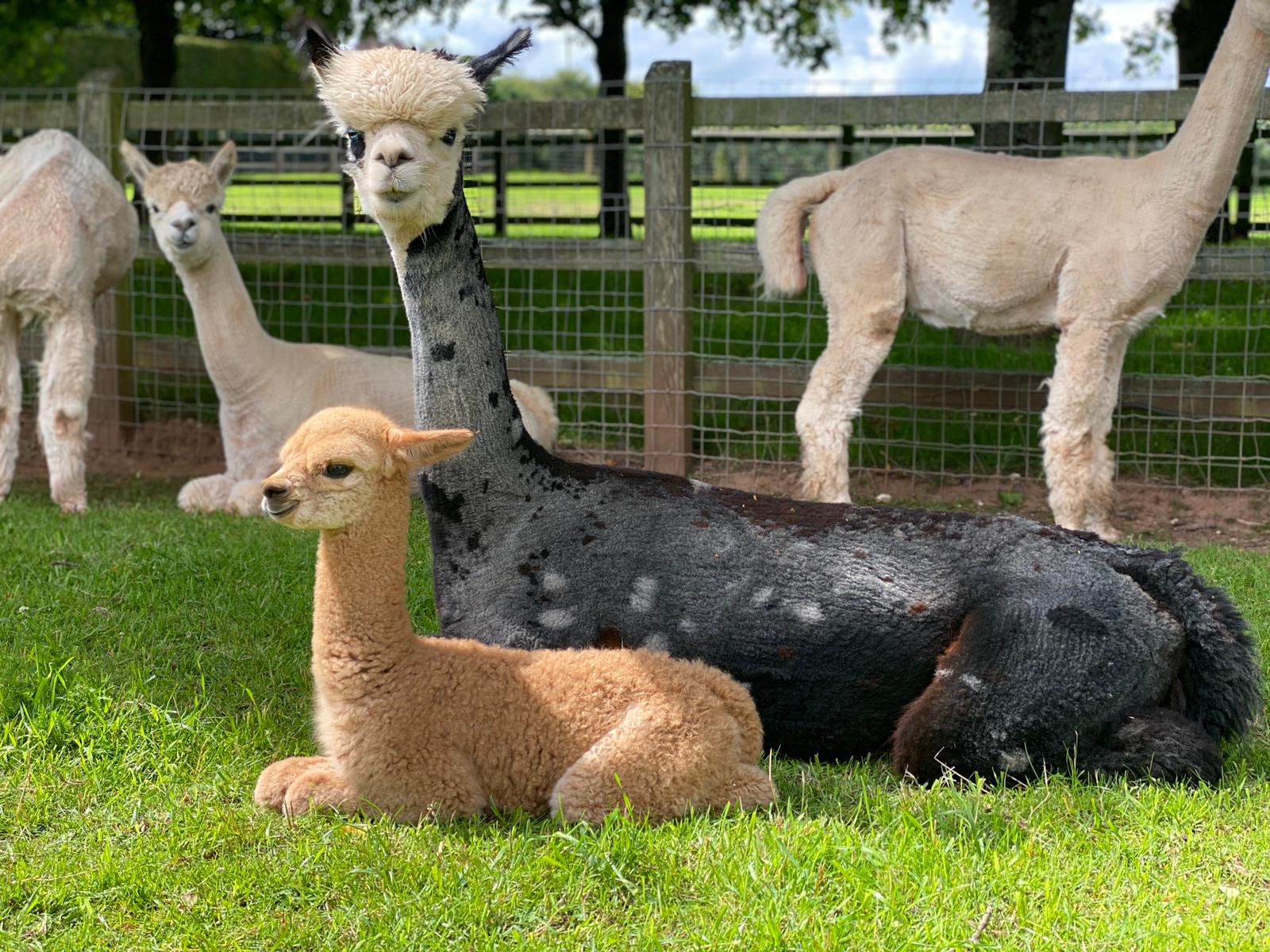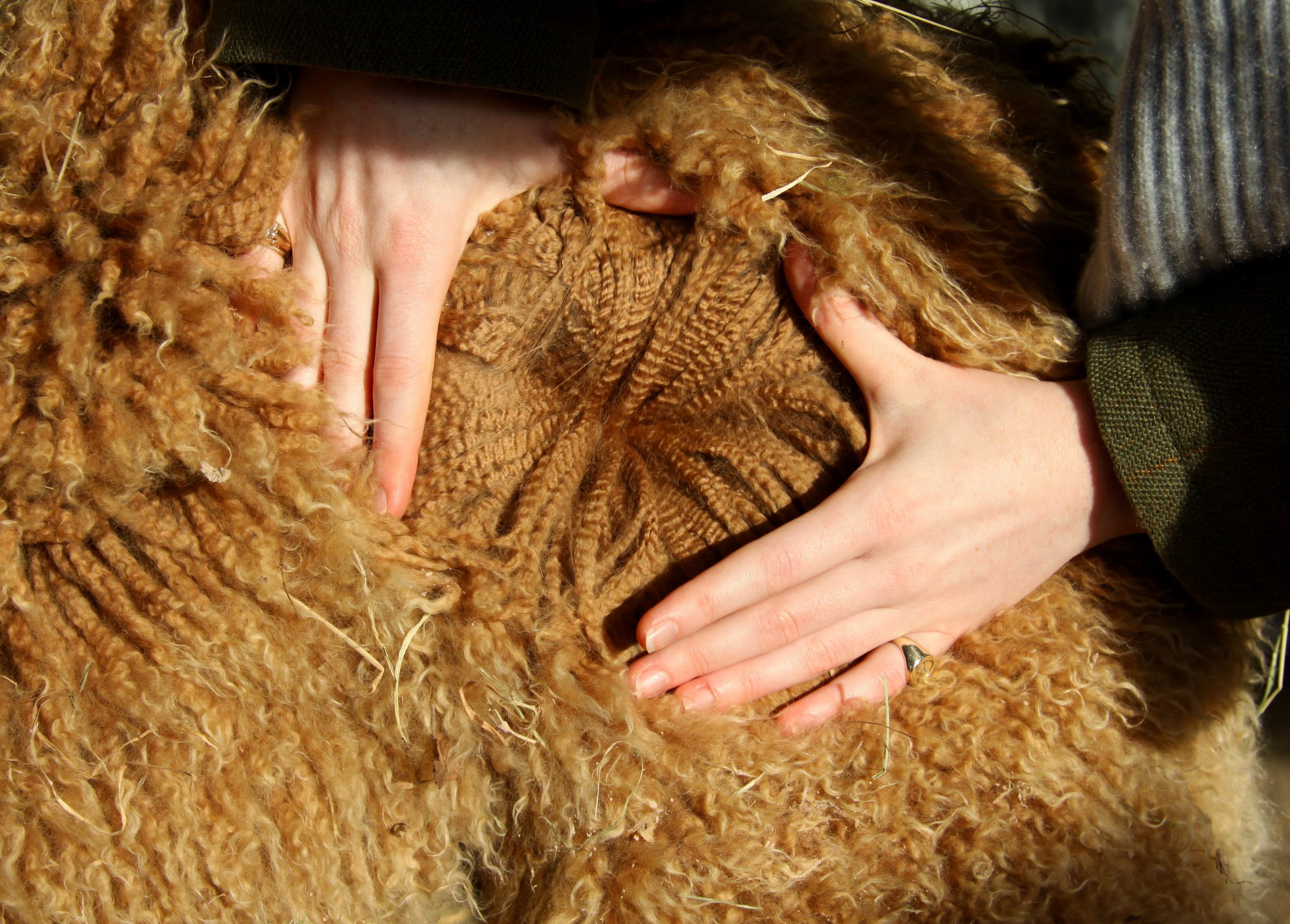Alpacas are fairly easy to care for but as with all animals they have specific needs. It’s important to make sure your alpacas are a happy herd.
Shelter and Fencing
Alpacas love to roam freely but they need basic shelter and protection from the elements. Simple three sided shelters are enough to protect alpacas from wind and rain.

Their thick fleece has insulating properties shielding them from the cold in winter. During the summer months, alpacas need sufficient shade to protect them from the heat. Yearly shearing is essential to ensure they stay cool.
Alpacas do not generally challenge fences and so a four foot high fence is adequate. Barbed wire should be avoided because their fleece can get tangled in it and they can become trapped. If you are in a high risk TB area you could consider dug-in badger proof fencing or low level electric wire on the exterior side of your paddock fencing where the alpacas are not able to come into contact with it.
 Halter Training
Halter Training
Halter training is key for the easy alpaca handling. Training from a young age will ensure they’re familiar with being handled. Halter training makes it easier for general alpaca care, from movement between paddocks and general transportation to matings and showing at events.

Feeding
Alpacas are semi-ruminants, and need access to grass and water at all times. When adverse weather affects grass quality, a supply of hay should be available as a substitute. Daily feed & mineral supplements are also necessary to make sure they stay well nourished and get all the essential vitamins and minerals that they require. We recommend GWF Camelibra as a good all round feed, however there are other products available. Check the nutritional labels to choose the best for your alpacas.
Pregnant and /or lactating females will have additional nutritional requirements therefore will require additional fibre and protein. We recommend Fibregest alongside a switch from Camelibra to Hembra & cria. We may also give small amounts of sugar beet during the winter months to provide additional energy.

Vitamin ADE
Vitamin D requires UV sunlight for its synthesis in the skin. Unfortunately during the British wintertime UV levels are well below that of an alpacas native South America and are insufficient for alpacas to synthesise enough vitamin D. It is therefore essential to supplement vitamin D in alpacas, especially growing crias. This can be given either via a sub-cutaneous injection every 8 weeks from October to March or orally using a drench every six weeks during the same period.

Stocking Ratio and Paddocks
It’s recommended to home a minimum of three alpacas as they’re more comfortable in a group. Extra company will make for a happy alpaca. A stocking rate of five to six alpacas per acre of land is optimum to ensure there’s space for them to thrive.
Paddocks should be kept as clean as possible to avoid contamination from parasites and we recommend daily ‘poo picking’ if possible, a minimum of three times a week is essential.
Paddocks should be regularly checked for poisonous plants a full list of these can be obtained on the British Alpaca Society website.
Plants that can become tangled in fleeces should be cleared or fenced off e.g brambles, hawthorn etc.
Fleece
Alpacas grow a superlative, hypoallergenic fleece that’s both flame and water resistant making it a sought-after material for clothing. There’re 22 natural colours of alpaca spanning from white to black, through hues of beige and brown. Their fleeces are sheared once a year to keep them cool for the summer. It’s essential to shear alpaca’s fleeces every year to ensure optimum health, exceptions to this could be suri’s, elderly or unwell alpacas.
Observation
It’s important to observe your alpacas daily to determine abnormal behaviours and uncover any problems within your herd. Keeping a log is a useful way to monitor their behaviour so any issues can be easily identified and remedied. A monthly weigh in or body condition assessment is necessary and helps to spot the first signs of a sick animal.

Vaccinations & Care
Alongside shearing their fleece, alpaca’s toenails need trimming on an as-needed basis. Alpacas also require regular vaccinations and may need anti-parasitic medicines to ensure they’re fully protected. We test our alpacas routinely for parasites to avoid unnecessary medications and only treat should we uncover a problem.
Transportation
Alpacas are easy to transport as they sit down when in motion. From trailers to vans, a range of modes can be used. It’s important to make sure alpacas feel secure while they’re travelling and have a comfortable place to sit. Familiarising alpacas with transportation procedures while they’re young will make for a smooth process during adulthood.
 Breeding
Breeding
Alpacas have a gestation of about 11 and a half months, but this can vary. They give birth to one cria (twins are very rare and often do not survive) that weighs about 5 to 9 kg. Female alpacas tend to give birth in the morning and spring/summer births are preferential to give mum and cria the benefit of warm days & nights and lush pasture. The cria is weaned at about 6 months of age once they are over 35 kg in weight.
The females are generally remated 2-6 weeks after the birth and the first and last three months of pregnancy should be as stress free as possible to prevent the alpaca aborting or delivering too early.
Males become fertile at about 18 months to 3 years. To ensure successful breeding programmes, only the most outstanding males should be kept back for stud work.

